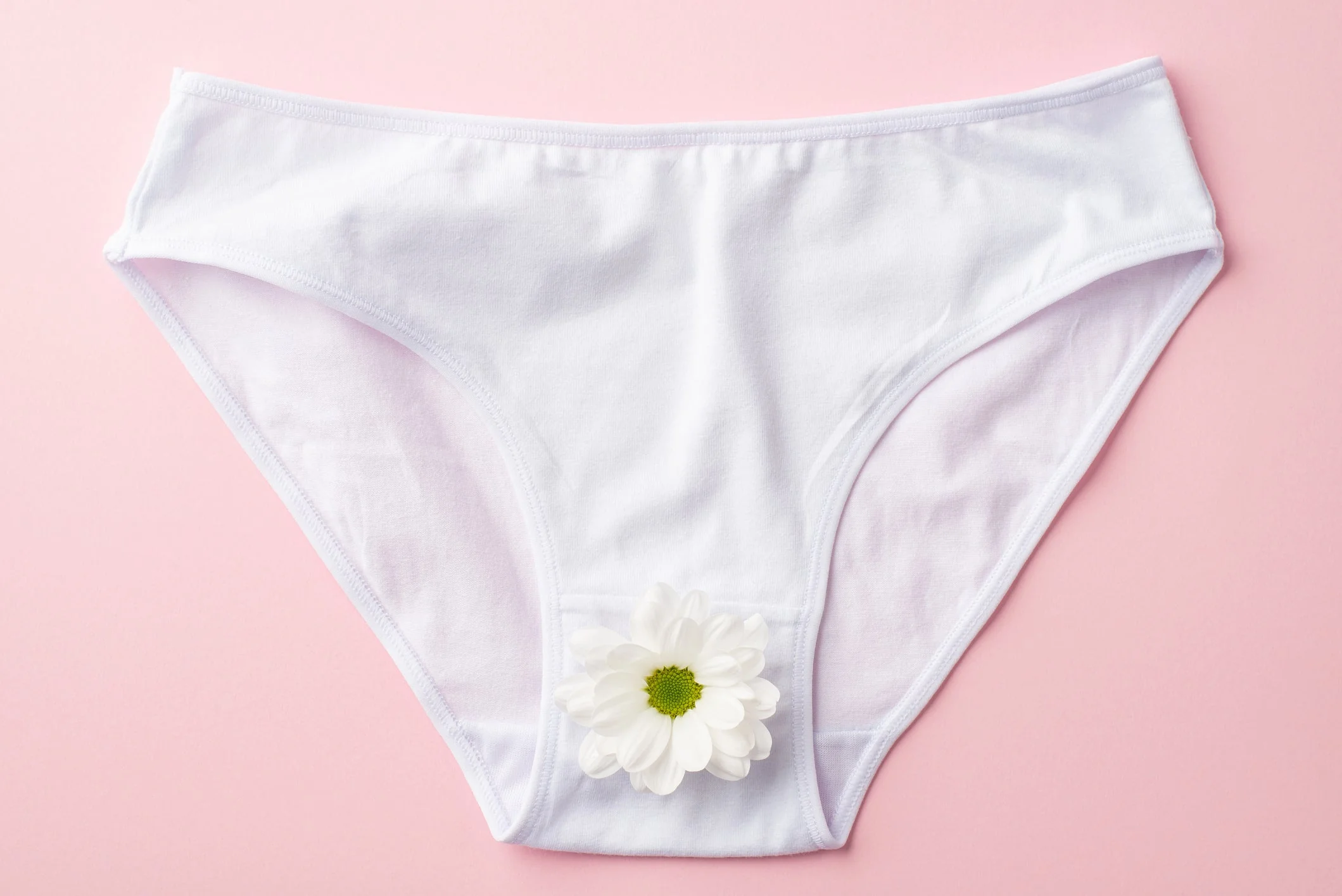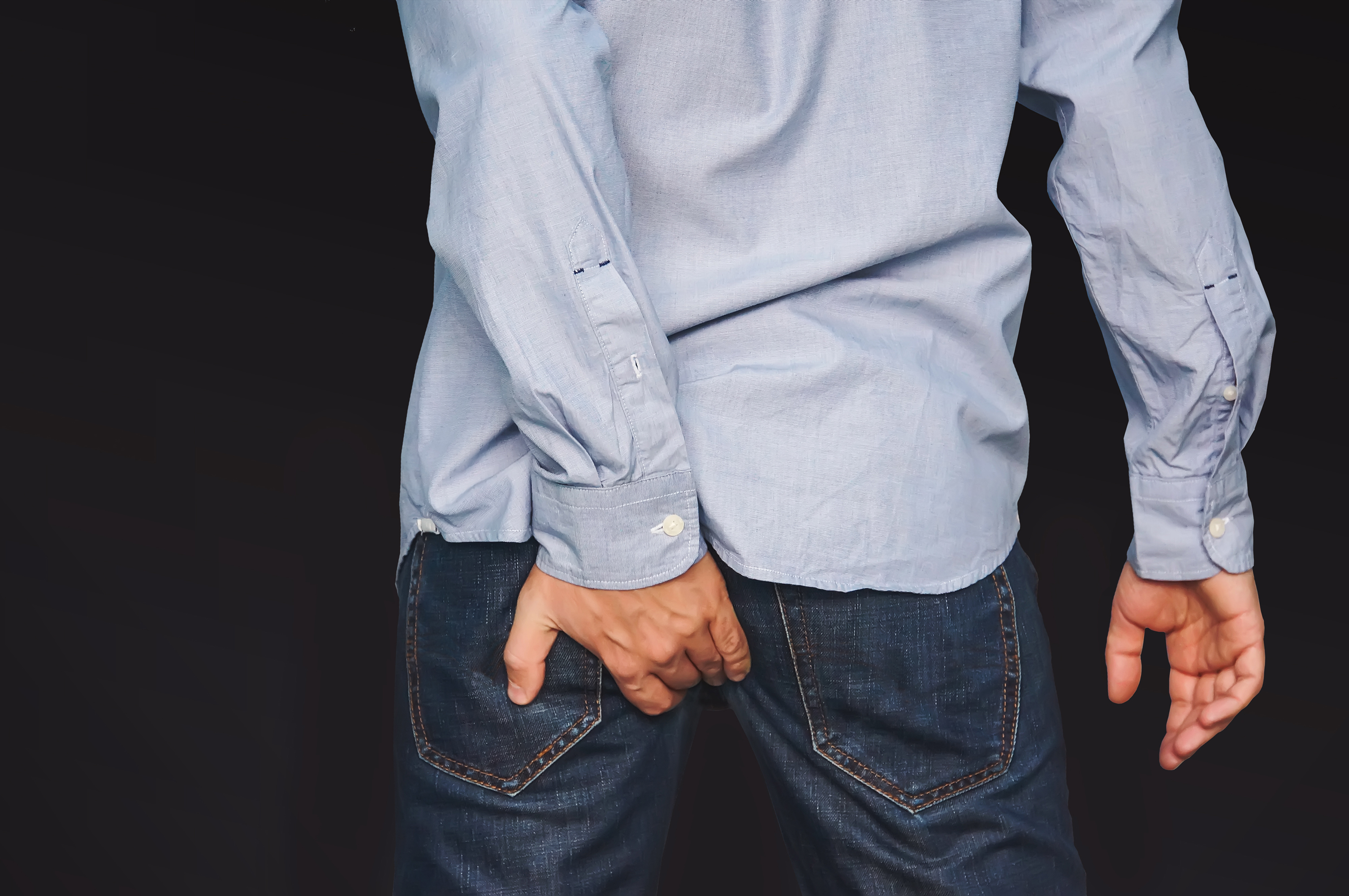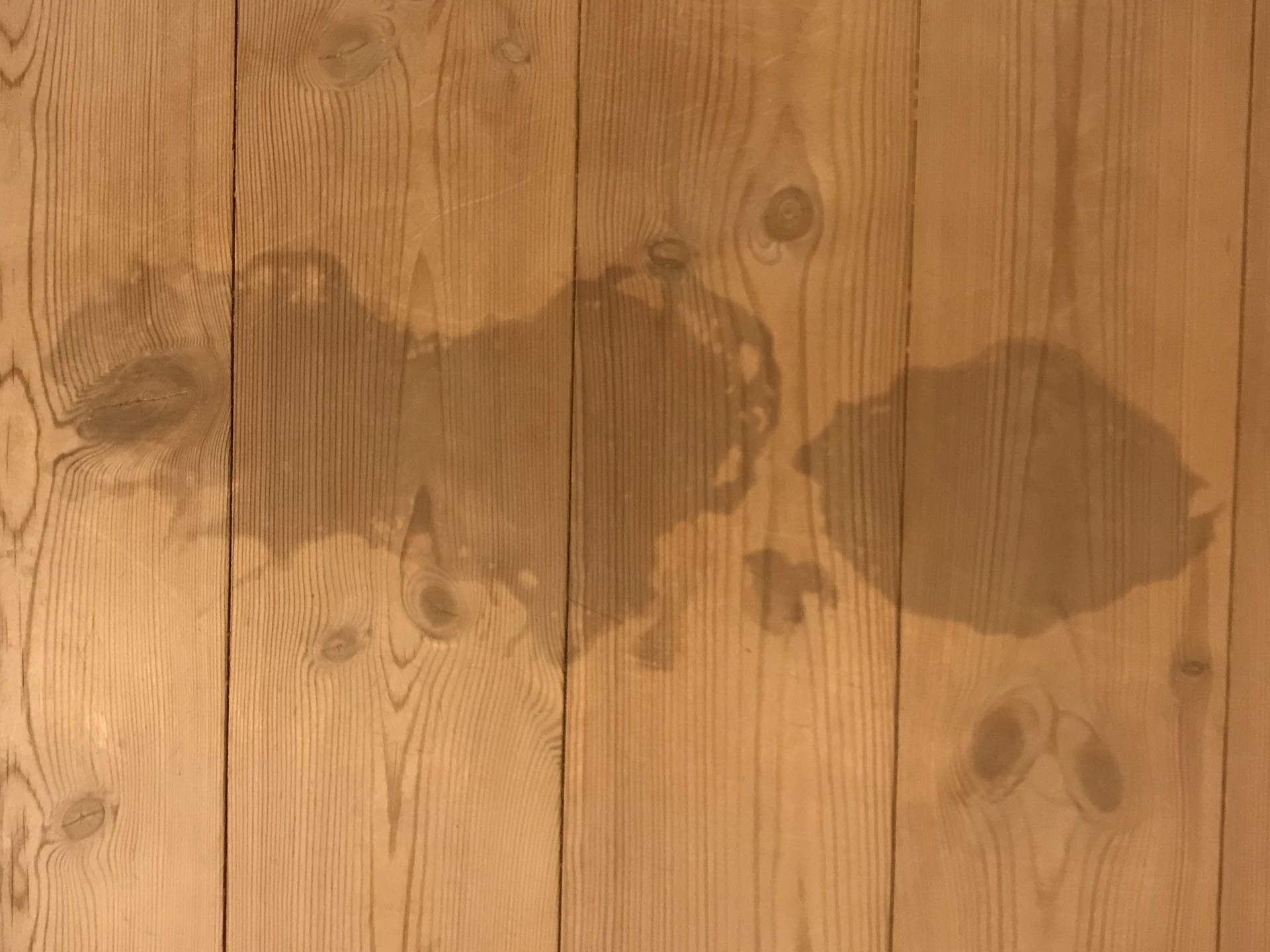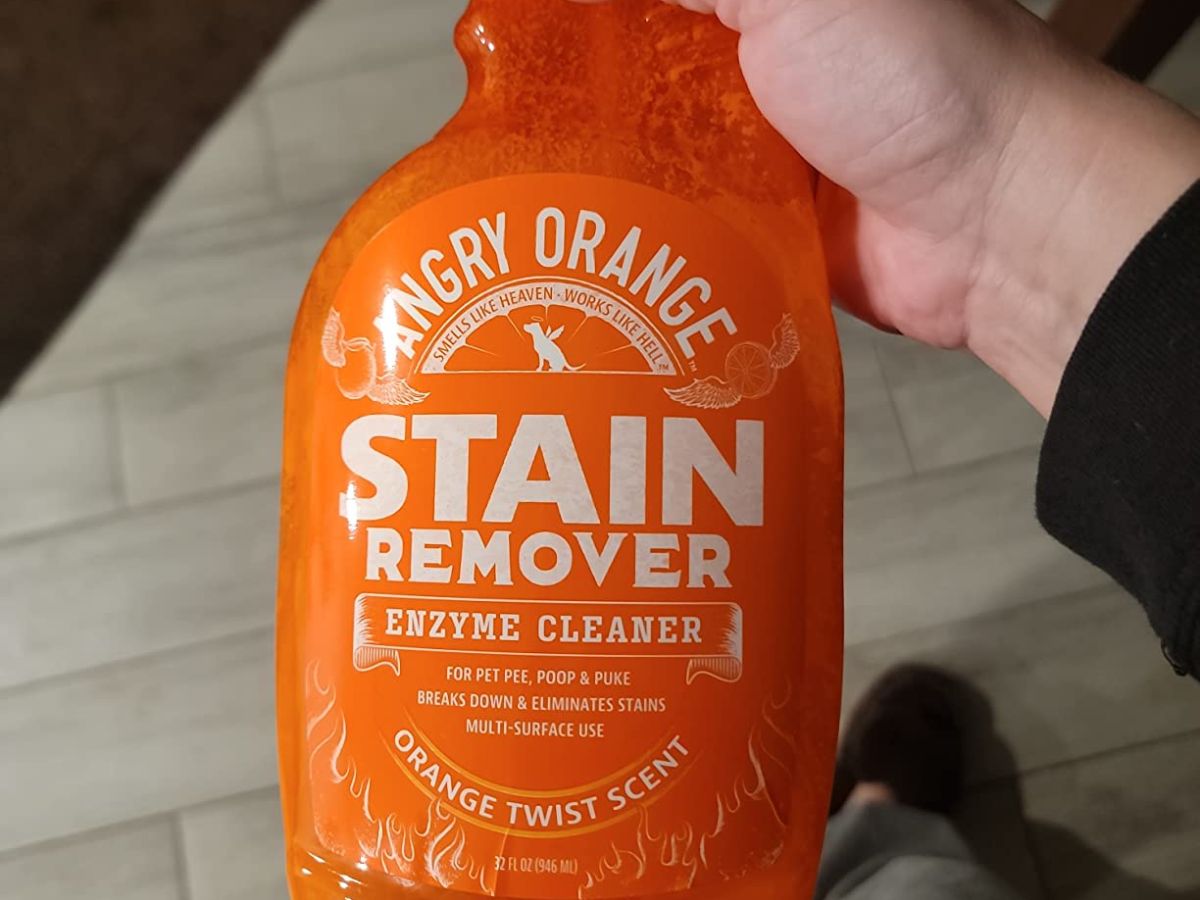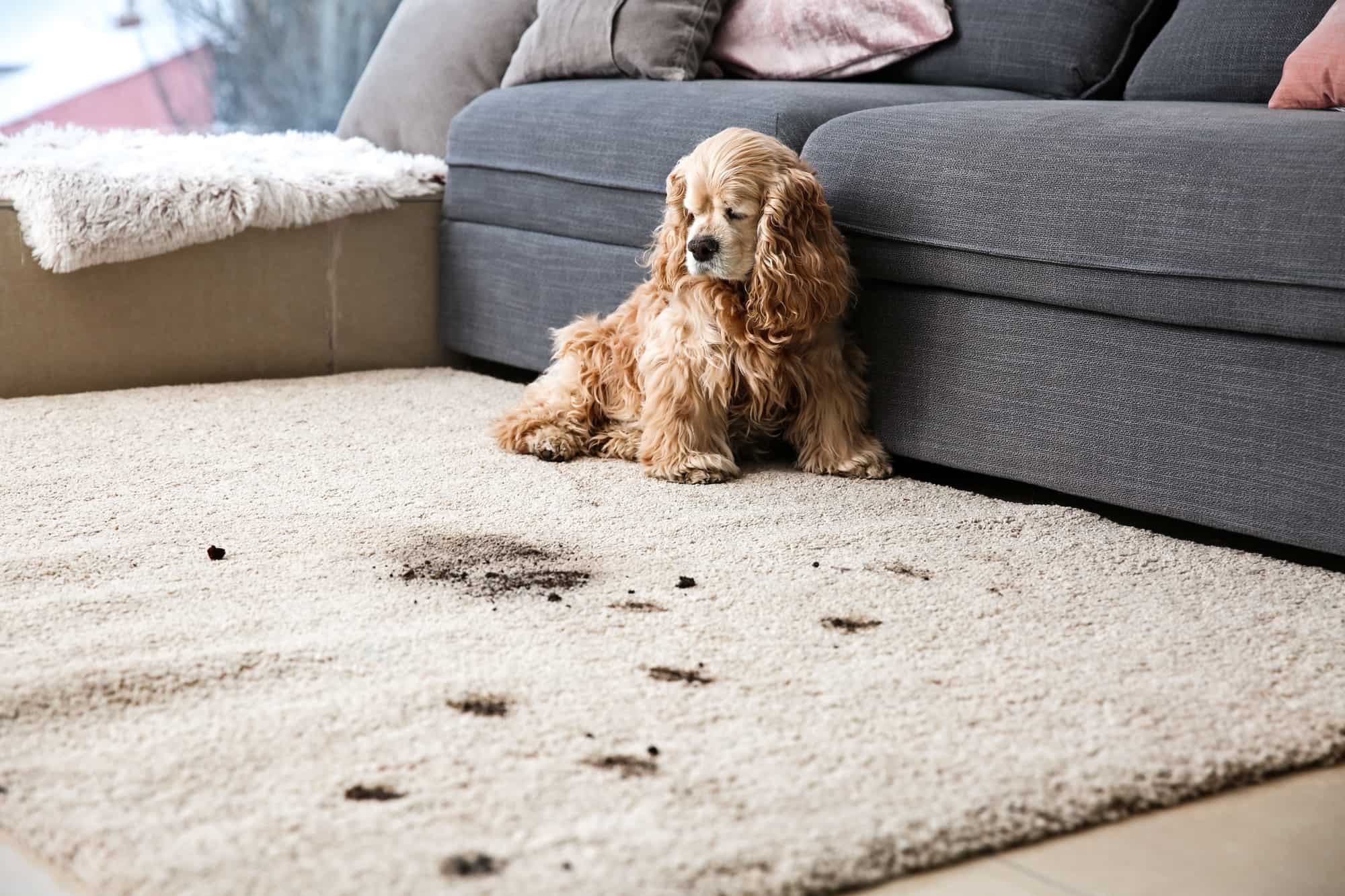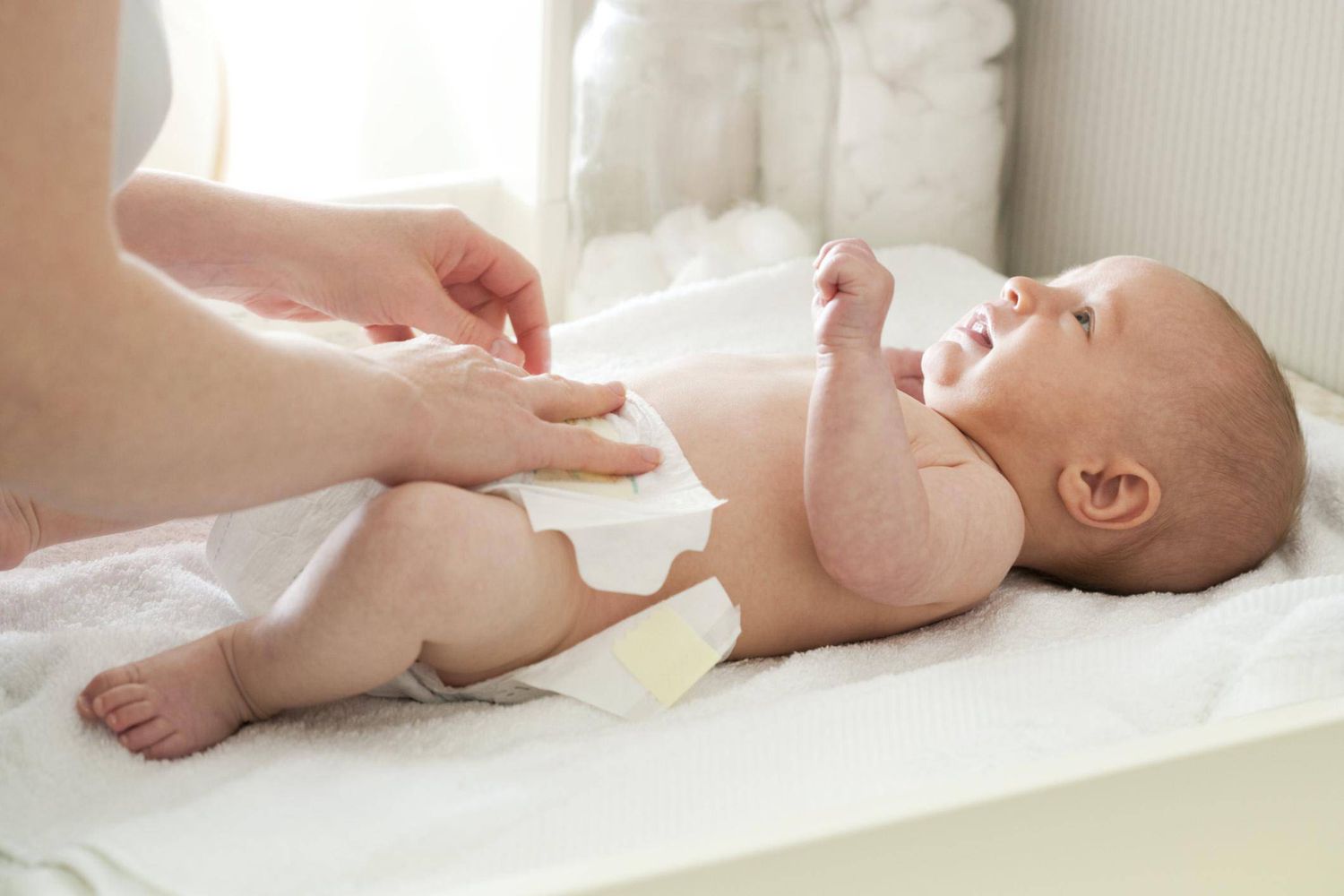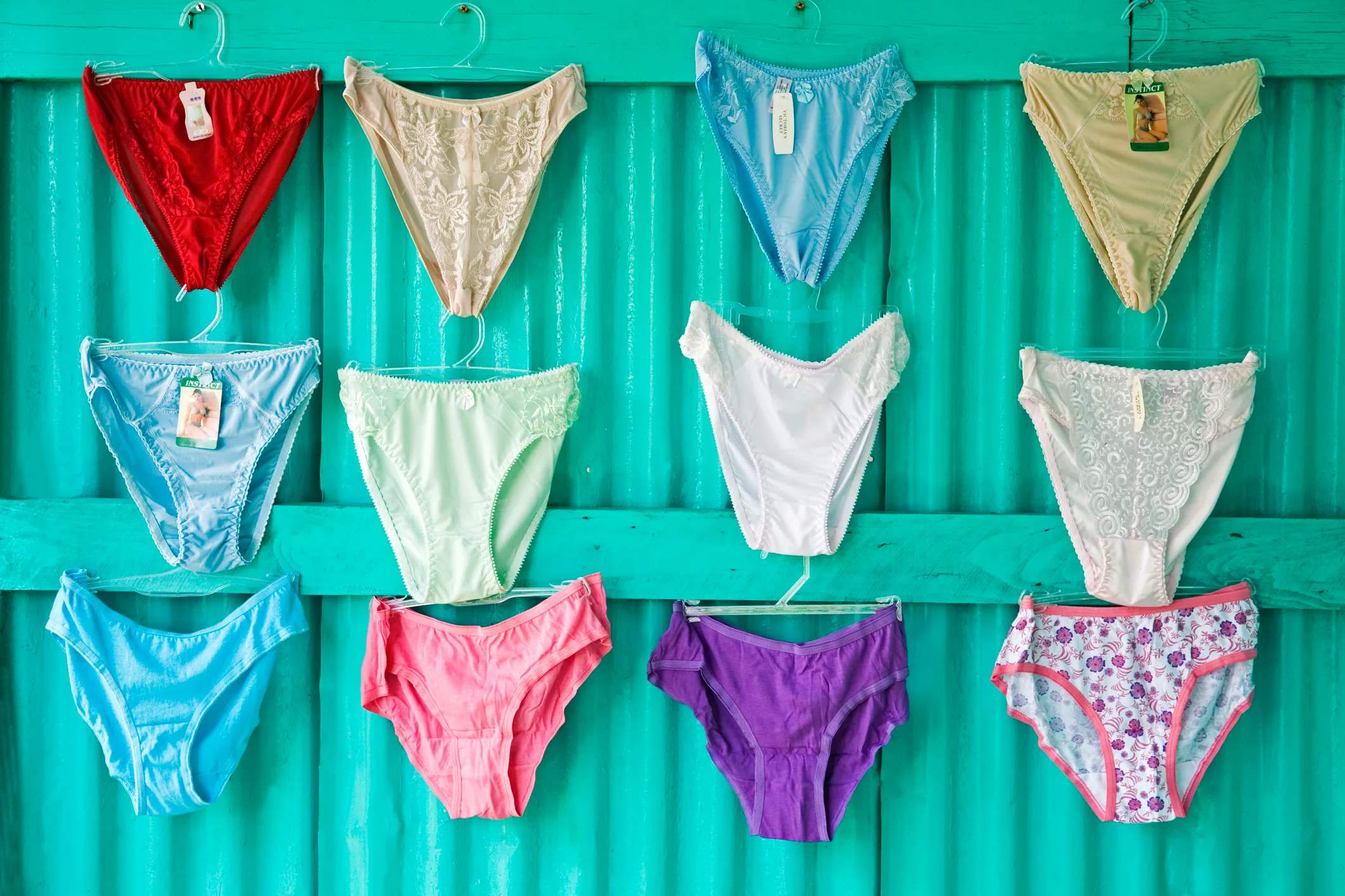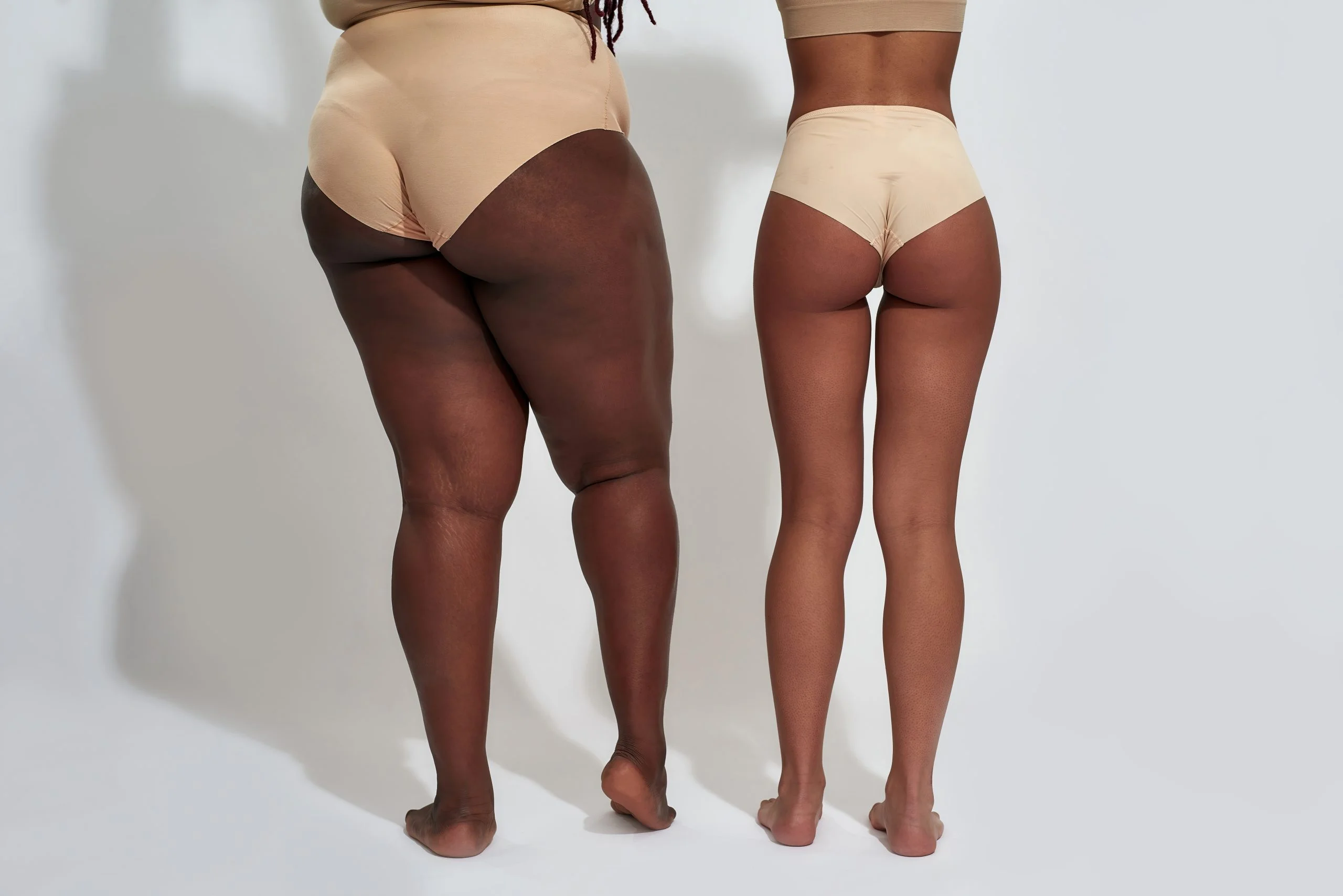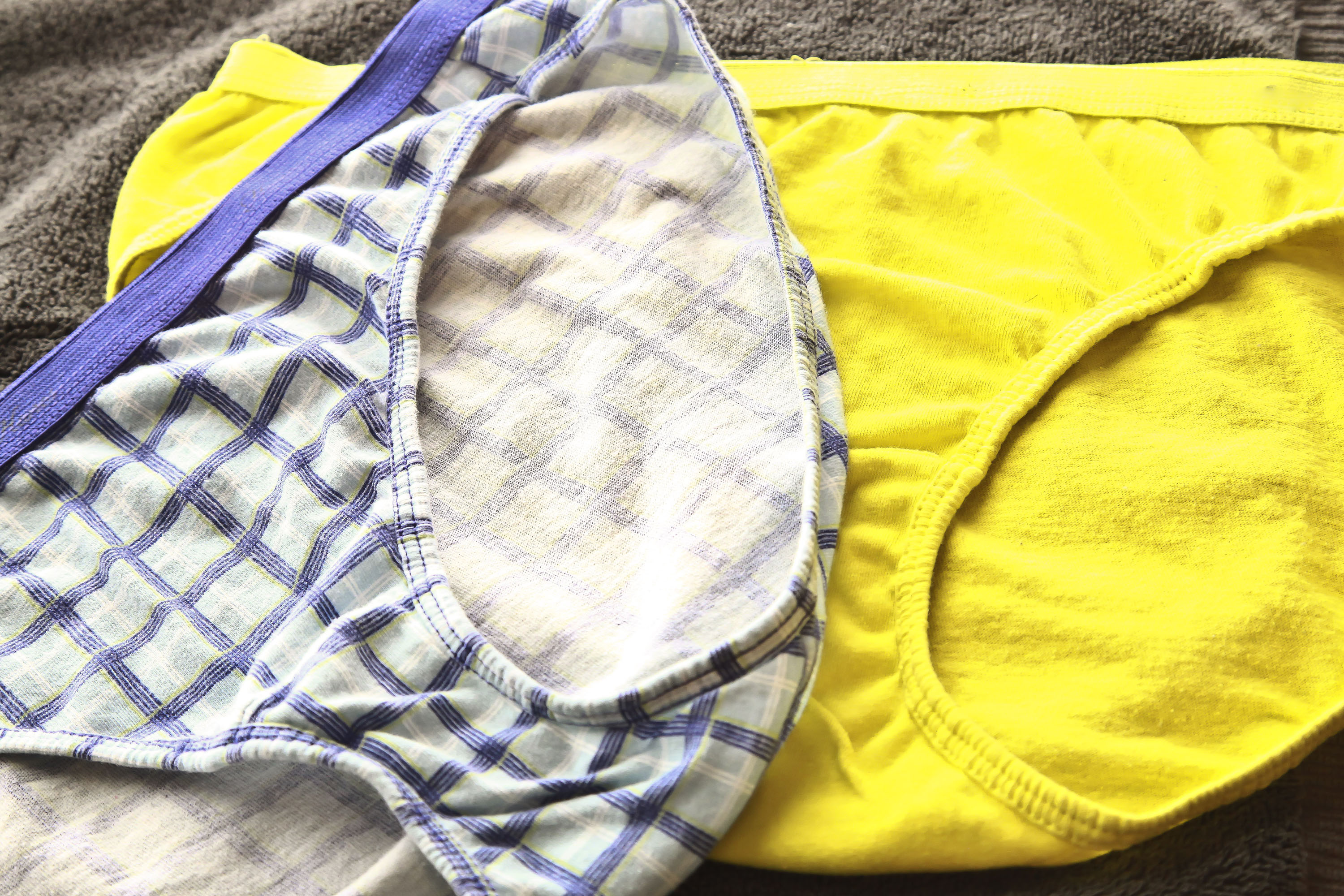Home>How-to Guides>For Women>How To Get Stains Out Of My Panties
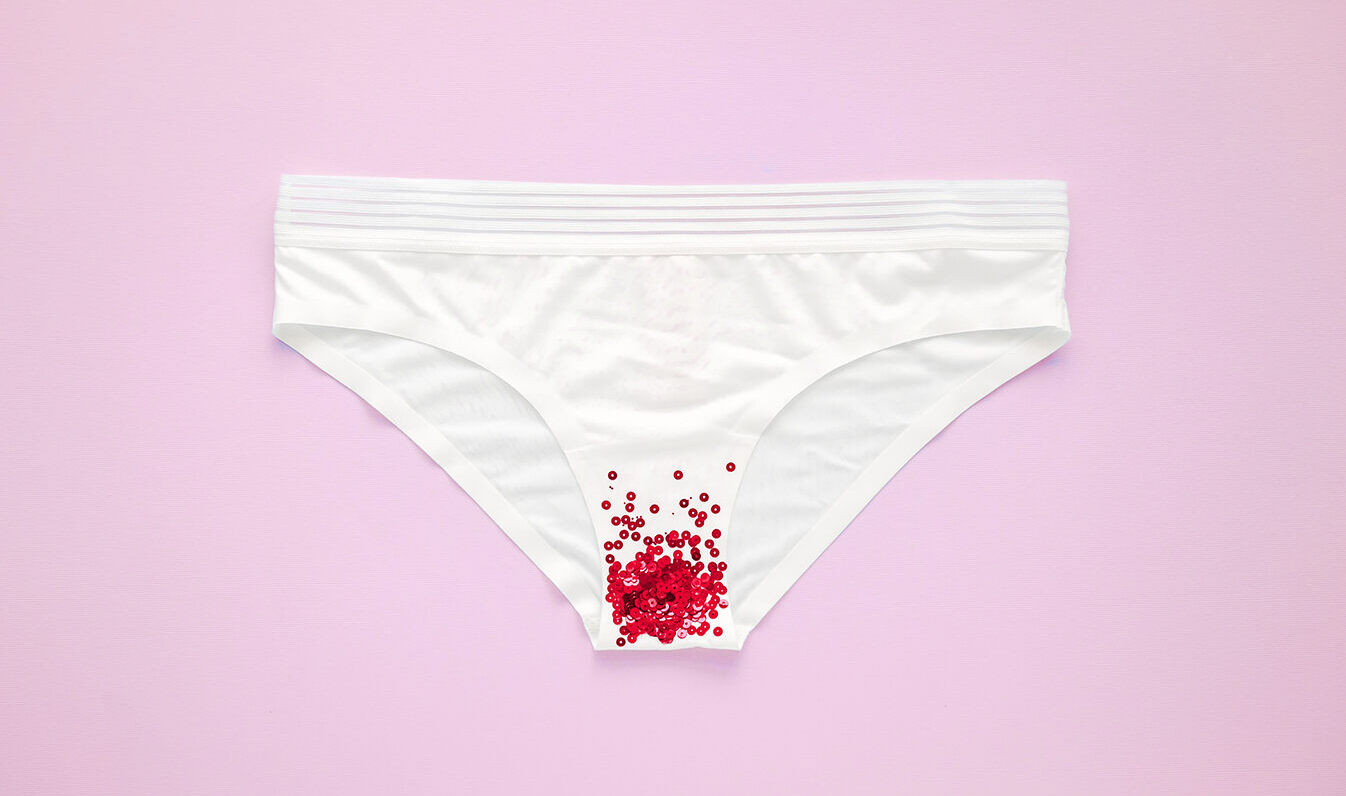

For Women
How To Get Stains Out Of My Panties
Modified: September 23, 2023
Learn effective techniques to remove stubborn stains from your panties. Our step-by-step guide for women will help you keep your underwear fresh and clean.
(Many of the links in this article redirect to a specific reviewed product. Your purchase of these products through affiliate links helps to generate commission for Under-tec.com, at no extra cost. Learn more)
Table of Contents
Introduction
Welcome to our comprehensive guide on how to get stains out of your panties. We understand that dealing with stubborn stains can be frustrating, especially when it comes to delicate garments like panties. Whether you’re facing food and beverage stains, stubborn oil and grease marks, or even bodily fluid stains, we’ve got you covered.
Stains on panties can happen to anyone, and it’s essential to address them promptly to ensure the longevity of your favorite underwear. Before we dive into the different types of stains and their removal techniques, let’s emphasize the importance of acting quickly. The longer a stain sets into the fabric, the harder it becomes to remove.
In this guide, we will explore common types of stains such as food and beverage stains, oil and grease marks, blood stains, sweat and body odor stains, urine stains, menstrual blood stains, and vaginal discharge stains. We’ve gathered a collection of effective stain removal methods that you can easily incorporate into your laundry routine to keep your panties looking fresh and stain-free.
It’s worth noting that while we provide expert advice and tips, not all stains can be entirely removed, especially if they have been left untreated for an extended period. In such cases, it’s recommended to consult with a professional cleaner or consider retiring the stained garments.
Now, let’s dive into each type of stain and discover how to restore your panties to their pristine condition.
Common types of stains
Before we delve into stain removal techniques, let’s familiarize ourselves with the common types of stains that can affect your panties:
- Food and beverage stains: Whether it’s a splash of coffee, a smudge of chocolate, or a dripped tomato sauce, food and beverage stains can quickly find their way onto your underwear.
- Oil and grease stains: Oily foods or accidentally brushing against greasy surfaces can leave unsightly oil and grease stains on your panties.
- Blood stains: Accidents happen, and blood stains can be particularly stubborn. From a minor cut to menstrual leaks, it’s essential to tackle these stains promptly.
- Sweat and body odor stains: Sweat can leave its mark on panties, causing discoloration and odor buildup over time.
- Urine stains: Whether it’s a result of urinary incontinence or an accident, urine stains can be particularly challenging to remove if left untreated.
- Menstrual blood stains: Menstrual leaks happen to the best of us, and effectively removing menstrual blood stains is crucial for maintaining the cleanliness of your underwear.
- Vaginal discharge stains: Vaginal discharge is a normal bodily function, but it can leave stains on your panties that require special attention to remove.
Understanding the type of stain you’re dealing with is the first step towards successful removal. Now, let’s explore some general tips and techniques for effectively getting stains out of your panties.
General tips for stain removal
When it comes to removing stains from your panties, there are some general tips and techniques that can be applied to various types of stains. Here are some guidelines to keep in mind:
- Act quickly: The key to successful stain removal is to act as soon as possible. The longer a stain sits, the harder it becomes to remove. So, don’t wait too long before treating the stain.
- Read the care label: Before attempting any stain removal method, check the care label on your panties. Different fabrics may require specific treatment, so it’s important to follow the manufacturer’s instructions.
- Test in an inconspicuous area: Before applying any stain removal solution, test it in a small, inconspicuous area of the fabric to ensure it doesn’t cause any damage or discoloration.
- Blot, don’t rub: When treating a stain, avoid rubbing it vigorously. Instead, gently blot the area with a clean cloth or paper towel to lift the stain without spreading it further.
- Work from the outside in: When applying a stain removal solution, start from the outer edges of the stain and work your way towards the center. This helps prevent the stain from spreading.
- Follow proper washing techniques: After treating a stain, wash your panties according to the care label instructions. Use the appropriate water temperature and laundry detergent for the fabric type.
- Avoid heat: Heat can set stains, so avoid using hot water or placing your panties in the dryer until the stain is completely removed.
- Patience is key: Some stubborn stains may require multiple treatment attempts. Be patient and persistent, and continue applying the stain removal solution until the stain is fully gone.
By following these general tips, you’ll be better equipped to tackle stains on your panties effectively. In the following sections, we’ll provide specific techniques for addressing different types of stains, so stay tuned!
Removing food and beverage stains
Food and beverage stains can easily find their way onto your panties, whether it’s a coffee spill or a splash of sauce. Here are some effective techniques for removing common food and beverage stains:
- Blot the stain: Start by blotting the stain with a clean cloth or paper towel to remove any excess liquid. Avoid rubbing the stain, as it can push it further into the fabric.
- Cold water: Rinse the stained area under cold running water as soon as possible. The cold water helps to loosen the stain before further treatment.
- Dish soap: Apply a small amount of dish soap directly to the stained area and gently rub it in with your fingers or a soft brush. Let it sit for a few minutes before rinsing with cold water.
- Vinegar: For tougher food stains, mix equal parts white vinegar and water and apply it to the stained area. Let it sit for 15-30 minutes before rinsing with cold water.
- Baking soda paste: Create a paste by mixing baking soda with water and apply it to the stain. Let it sit for 30 minutes, then gently scrub and rinse with cold water.
- Pre-treat with stain remover: If the stain persists, pre-treat the area with a stain remover or laundry detergent specifically designed for removing food and beverage stains.
- Wash as usual: After treating the stain, wash your panties according to the care label instructions. Check if the stain is fully removed before drying. If not, repeat the stain removal process.
Remember, the key to successfully removing food and beverage stains is to act quickly. Promptly treating the stain and using the right techniques will increase the chances of complete stain removal. Now, let’s move on to tackling oil and grease stains on your panties.
Treating oil and grease stains
Oil and grease stains can be particularly stubborn and can easily find their way onto your panties, whether it’s from cooking or accidental contact. If you’re dealing with oil or grease stains, try the following techniques to effectively remove them:
- Blot and absorb: Start by blotting the stain with a clean cloth or paper towel to remove any excess oil or grease. Be gentle and avoid rubbing, as it can spread the stain further.
- Talcum powder or cornstarch: Sprinkle talcum powder or cornstarch on the stained area and gently rub it in. Let it sit for 10-15 minutes to absorb the oil or grease before brushing off the powder.
- Dishwashing liquid: Apply a small amount of dishwashing liquid directly to the stain and gently rub it in with your fingers or a soft brush. Let it sit for a few minutes to penetrate the fabric.
- Hot water and laundry detergent: Soak the stained area in hot water and a small amount of laundry detergent for about 30 minutes. Agitate the fabric occasionally to help release the oil or grease.
- Pre-treat with stain remover: For stubborn oil or grease stains, pre-treat the area with a commercial stain remover or a mixture of equal parts vinegar and water. Let it penetrate the fabric for at least 15 minutes before washing.
- Wash as usual: After treating the stain, wash your panties according to the care label instructions using warm water. Check if the stain is fully removed before drying. If not, repeat the stain removal process.
Keep in mind that older or set-in oil and grease stains may require multiple treatments to completely remove. Patience and persistence are key. Avoid drying your panties until the stain is fully gone, as heat can set the stain and make it more difficult to remove.
Now that we’ve covered oil and grease stains, let’s move on to addressing the challenge of removing blood stains from your panties.
Dealing with blood stains
Accidents happen, and blood stains can be particularly tricky to remove. Whether it’s a small cut or a menstrual leak, it’s important to address blood stains promptly to increase the chances of successful removal. Here are some techniques to effectively deal with blood stains on your panties:
- Rinse with cold water: As soon as possible, rinse the stained area under cold running water. Cold water helps to prevent the blood from setting into the fabric.
- Soak in cold water: If the stain is fresh or still visible after rinsing, soak the panties in a basin or bucket filled with cold water. Add a small amount of salt or enzyme-based stain remover to aid in the stain removal process.
- Hydrogen peroxide: For tougher blood stains, apply hydrogen peroxide directly to the stain and let it bubble. Then, rinse with cold water.
- Ammonia: For dried or set-in blood stains, mix equal parts water and ammonia and apply it to the stain. Let it sit for 15-30 minutes before rinsing with cold water.
- Baking soda paste: Create a paste by mixing baking soda with cold water and apply it to the stain. Gently scrub the fabric with a soft brush or toothbrush, then rinse with cold water.
- Pre-treat with stain remover: If the stain persists, pre-treat the area with a commercial stain remover or a mixture of hydrogen peroxide and liquid detergent. Let it sit for a few minutes before washing.
- Wash in cold water: After treating the stain, wash your panties in cold water with a quality laundry detergent. Check if the stain is fully removed before drying. If not, repeat the stain removal process.
Remember not to use hot water when dealing with blood stains, as this can cause the proteins in the blood to set and make the stain more difficult to remove. Additionally, avoid using chlorine bleach on blood stains, as it can cause them to become more stubborn.
Now that you know how to tackle blood stains, let’s move on to the next section where we’ll discuss removing sweat and body odor stains from your panties.
Removing sweat and body odor stains
Sweat and body odor stains can be a common and persistent problem with panties. The combination of sweat and bacteria can lead to discoloration and unpleasant odors. Here are some effective techniques for removing sweat and body odor stains:
- Rinse with cold water: Rinse the stained area under cold running water as soon as possible. Cold water helps to dilute and remove sweat and body odor.
- Pre-soak in vinegar: Create a solution of equal parts white vinegar and water. Soak the stained panties in this solution for 30 minutes to help neutralize odors.
- Lemon juice: Apply fresh lemon juice directly to the stained area and let it sit for 10-15 minutes. The acidic properties of lemon juice can help remove sweat stains and neutralize odor.
- Baking soda: Make a paste by mixing baking soda with water and apply it to the stained area. Let it sit for 30 minutes before rinsing. Baking soda helps absorb odors and lift stains.
- Enzyme-based stain remover: Use a commercial enzyme-based stain remover specifically designed for removing sweat and body odor stains. Follow the instructions on the product for best results.
- Wash with enzyme detergent: Use an enzyme-based laundry detergent when washing your panties. Enzymes help break down proteins and organic matter, effectively removing sweat and body odor stains.
- Hang to dry: Avoid using a dryer, as heat can set sweat stains and make them more difficult to remove. Instead, hang your panties to air dry in a well-ventilated area.
It’s important to note that regular laundering may not always completely eliminate sweat and body odor stains, especially if they have been left untreated for a long time. Therefore, it’s recommended to address these stains as soon as possible to improve the chances of removal.
Now that you know how to tackle sweat and body odor stains, let’s move on to addressing another common issue: urine stains.
Getting rid of urine stains
Urine stains can be a common issue, whether due to urinary incontinence or accidents. It’s essential to address these stains promptly to avoid lingering odors and discoloration. Here are some effective techniques for getting rid of urine stains:
- Blot and absorb: Start by blotting the stained area with a clean cloth or paper towel to remove any excess urine. Be careful not to rub the stain, as it can spread it further.
- Rinse with cold water: Rinse the stained area under cold running water as soon as possible. Cold water helps dilute and flush out the urine.
- Vinegar solution: Mix equal parts white vinegar and water and apply it to the stained area. Let it sit for a few minutes to neutralize odors and break down the stain.
- Baking soda: Sprinkle baking soda over the vinegar solution. It will start to bubble as it reacts with the vinegar. Gently scrub the area with a soft brush or toothbrush, then rinse with cold water.
- Enzyme cleaner: Use an enzyme-based cleaner specifically designed for removing urine stains. Follow the instructions on the product for best results.
- Wash as usual: After treating the stain, wash your panties according to the care label instructions using a quality laundry detergent. Check if the stain is fully removed before drying. If not, repeat the stain removal process.
It’s important to remember that urine stains can be particularly stubborn, especially if they have been left untreated for a long time. If the stain persists, consider consulting with a professional cleaner who may have additional techniques or products to effectively remove urine stains.
Now that you know how to tackle urine stains, let’s move on to addressing the challenge of removing menstrual blood stains from your panties.
Tackling menstrual blood stains
Menstrual leaks happen to many women, and effectively removing menstrual blood stains is essential for maintaining the cleanliness and longevity of your panties. Here are some techniques to tackle and remove menstrual blood stains:
- Rinse with cold water: Rinse the stained area under cold running water as soon as possible. Cold water helps to prevent the blood from setting into the fabric.
- Soak in cold water: If the stain is fresh or still visible after rinsing, soak the panties in a basin or bucket filled with cold water. Add a small amount of salt or enzyme-based stain remover to aid in the stain removal process.
- Hydrogen peroxide: For tougher menstrual blood stains, apply hydrogen peroxide directly to the stain and let it bubble. Then, rinse with cold water.
- Ammonia: For dried or set-in menstrual blood stains, mix equal parts water and ammonia and apply it to the stain. Let it sit for 15-30 minutes before rinsing with cold water.
- Baking soda paste: Create a paste by mixing baking soda with cold water and apply it to the stain. Gently scrub the fabric with a soft brush or toothbrush, then rinse with cold water.
- Pre-treat with stain remover: If the stain persists, pre-treat the area with a commercial stain remover or a mixture of hydrogen peroxide and liquid detergent. Let it sit for a few minutes before washing.
- Wash in cold water: After treating the stain, wash your panties in cold water with a quality laundry detergent. Check if the stain is fully removed before drying. If not, repeat the stain removal process.
It’s important to note that older or set-in menstrual blood stains may require multiple treatments to completely remove. Additionally, avoid using hot water or chlorine bleach when treating these stains, as heat can set the blood and make it more challenging to remove.
Now that we’ve discussed tackling menstrual blood stains, let’s move on to addressing another common issue: vaginal discharge stains.
Addressing vaginal discharge stains
Vaginal discharge is a normal bodily function for women, but it can sometimes leave stains on your panties. While these stains may be frustrating, there are techniques you can use to effectively remove them. Here’s how to address vaginal discharge stains:
- Rinse with cold water: Rinse the stained area with cold water as soon as possible. Cold water helps to dilute and remove the discharge.
- Pre-soak in cold water: If the stain is still visible after rinsing, soak the panties in a basin or bucket filled with cold water. Add a small amount of mild detergent or enzyme-based stain remover to help break down the stain.
- Enzyme-based laundry detergent: Apply a small amount of enzyme-based laundry detergent directly to the stain. Gently rub the fabric together to work the detergent into the stain.
- Baking soda paste: Create a paste by mixing baking soda with water and apply it to the stained area. Gently scrub the fabric with a soft brush or toothbrush, then rinse with cold water.
- Wash with like colors: Wash your panties separately or with similar colors to avoid any potential transfer of the stain to other garments.
- Avoid hot water: It’s best to wash vaginal discharge stains with cold or lukewarm water, as hot water can cause the proteins in the discharge to set and make the stain more difficult to remove.
- Check before drying: Before drying your panties, check to ensure that the stain is fully removed. If the stain persists, repeat the stain removal process or consider seeking professional help.
It’s important to note that vaginal discharge can vary in consistency and color, and some types of discharge may be more stubborn to remove than others. In some cases, using a panty liner or wearing dark-colored underwear can help prevent visible stains.
With these techniques, you can effectively address vaginal discharge stains and keep your panties clean and fresh. Now that we’ve covered various types of stains and their removal techniques, let’s conclude this guide.
Conclusion
Managing stains on your panties doesn’t have to be a stressful experience. With the right techniques and a proactive approach, you can effectively remove common types of stains and keep your underwear looking fresh. Remember to act quickly, follow the care label instructions, and test stain removal solutions in inconspicuous areas.
We’ve explored various types of stains, including food and beverage stains, oil and grease stains, blood stains, sweat and body odor stains, urine stains, menstrual blood stains, and vaginal discharge stains. For each type of stain, we provided specific tips and techniques to tackle them.
From rinsing with cold water to utilizing household items like baking soda and vinegar, there are several methods to help lift stains and eliminate odors. Additionally, enzyme-based stain removers and laundry detergents specifically designed for stain removal can be highly effective.
Remember to be patient and persistent, especially with older or set-in stains. Some stains may require multiple treatments before they are completely removed. It’s essential to check if the stain is fully gone before drying your panties, as heat can set stains and make them tougher to remove.
Lastly, if you’re unsure about treating a specific stain or if it persists despite your efforts, don’t hesitate to seek professional help from a cleaner who specializes in dealing with delicate garments and difficult stains.
We hope this comprehensive guide has equipped you with the knowledge and confidence to tackle any stains that may find their way onto your panties. By using these stain removal techniques, you can extend the lifespan of your favorite underwear and keep them looking and smelling fresh.
Keep in mind that accidents happen, and stains are a part of life. The goal is not to stress over every single stain but to have the tools and information to address them effectively when they occur. With these stain removal tips and tricks, you can face any stain with confidence and ensure that your panties stay clean and stain-free.
